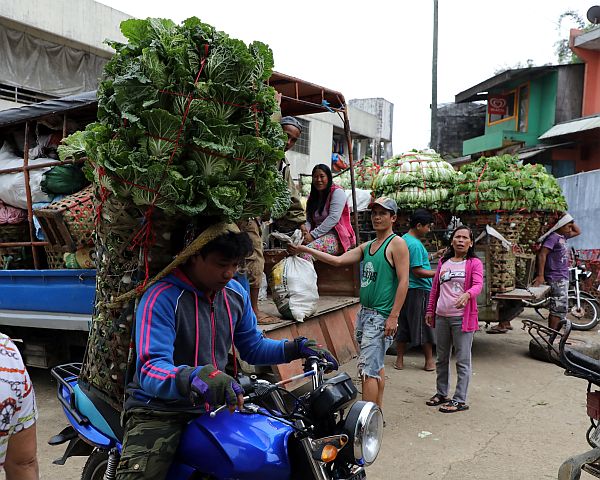
Like many other areas in Cebu, the province’s vegetable capital, Mantalungon, located in the town of Dalaguete, will have to prepare for the effects of El Niño forecasted in July. The Provincial Capitol has asked farmers in Cebu to begin applying for crop insurance to prepare for any eventuality brought on by the weather phenomenon.
CDN PHOTO/TONEE DESPOJO
This early, prepare for El Niño which is forecast to hit the province in July, said Cebu Provincial Agriculture Office (PAO) head Roldan Saragena to farmers across the province.
According to Saragena, since July is typically the harvest time for the first cropping season of the year, the weather phenomenon will definitely affect the farmers’ yield if they are unable to prepare for it.
PAO urges farmers to enroll in the government’s Agri-Fishery Insurance Program especially since 100% of the insurance premium will be paid for by the Cebu provincial government.
Under the program designed to enhance the productivity of farmers and fishermen by cushioning the impact of storms, floods and droughts caused by climate change, marginal farmers and fisherfolk will be insured with the Philippine Crop Insurance Corp. (PCIC).
An insured hectare of rice, if destroyed, will be paid between P40,000 and P50,000.
The insurance program also has an automatic death benefit of P10,000 for rice and corn farmers.
“All that farmers have to do is to apply for it,” Saragena said in Cebuano, adding that farmers have to coordinate with the local agriculture officers for them to register in the insurance program.
Farmers, he said, should also start conserving water.
Saragena explained that July is an especially critical time for corn crops planted in May.
If El Niño hits in July, corn crops would be about 40-50 days old from the time of planting and are likely to be affected, said Saragena.
Most farmers are currently tilling and preparing their land for the first cropping season, which includes applying fertilizer prior to the sowing of the seeds.
PAO has started to distribute around 400 water drums to local government units (LGUs) as well as seedlings such as grafted mangoes, super cardava suckers, sweet potato cuttings, and cassava.
The agriculture office is also preparing the purchase of planting materials, assorted vegetable seeds and high-yielding corn seed varieties, for distribution on the second or third week of April.
With the looming threats of El Niño, Cebu Governor Hilario Davide III assured that the provincial government is ready to address any problems that may result from the dry spell.
“We are always prepared for any eventuality, whether it’s El Niño or La Niña,” Davide said.
Julius Regner of the Provincial Disaster Risk Reduction and Management Office earlier told reporters that the PDRRMO will be assessing areas in the province that would likely need assistance in the event of a drought.
PDRRMO will evaluate areas affected by the drought last year and revisit the provincial government’s multi-year El Niño plan on the dry spell’s adverse effects.
El Niño is characterized by an unusual increase in ocean surface temperatures or warming in the center and eastern equatorial Pacific Ocean.
Reduced rainfall is one of its most common impacts in the Philippines.
Disclaimer: The comments uploaded on this site do not necessarily represent or reflect the views of management and owner of Cebudailynews. We reserve the right to exclude comments that we deem to be inconsistent with our editorial standards.
